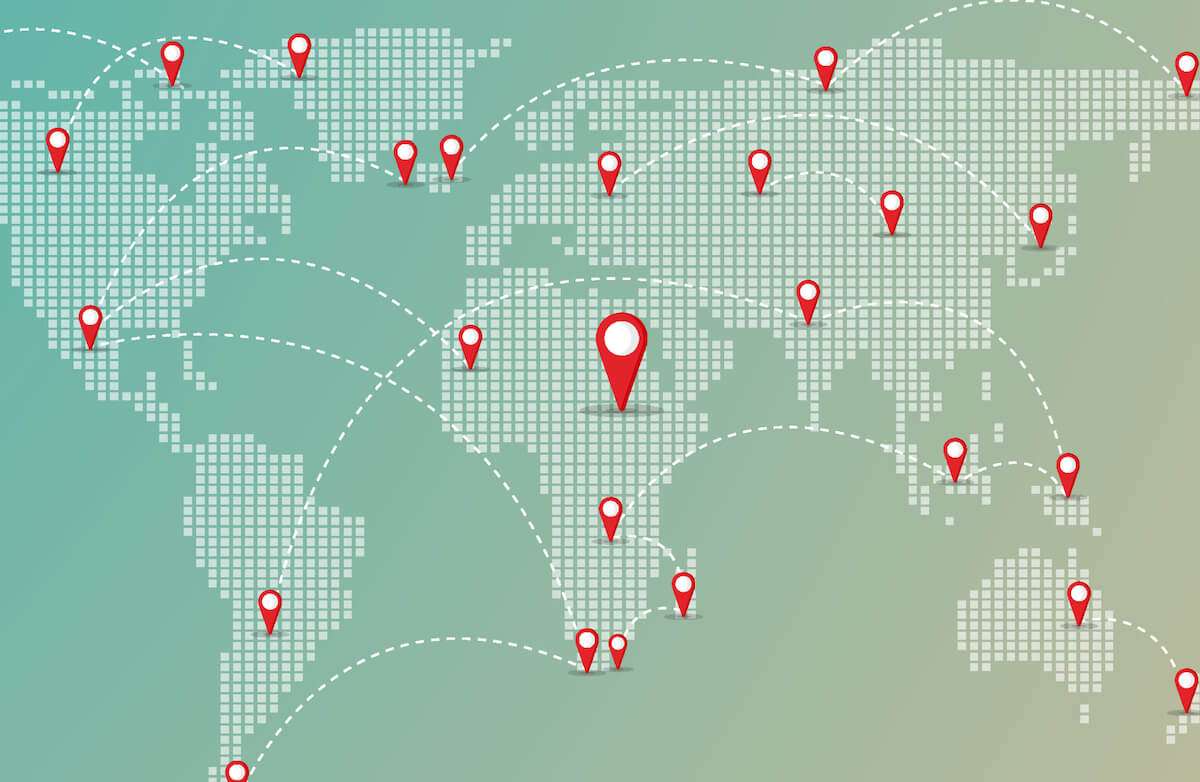ImpactAlpha, January 25 – Six trillion dollars. That’s roughly how much is needed annually to fight climate change and meet the U.N.’s Sustainable Development Goals by 2030.
It’s also roughly the amount of development finance capital on balance sheets around the world.
To mobilize capital for the low-carbon transition, DFIs and their cousins the multilateral development banks, or MDBs, are under increasing pressure to play a ‘catalytic’ role in financing for climate change mitigation and adaptation in emerging markets.
But the DFIs’ lack of transparency about their investment portfolios and their impact – especially in the area of catalytic financing – make it difficult if not impossible to determine whether such capital is achieving the intended outcomes.
“Across the board DFIs are insufficiently transparent,” concludes “The DFI Transparency Index,” a new report from the nonprofit Publish What You Fund. “DFIs are not providing evidence of impact, data regarding [private capital] mobilization, or proof of accountability to communities.”
“For many DFIs, even basic information about their investments is not publicly available,” it continues.
The international aid monitoring organization assessed the publicly-available organizational, investment, impact and ESG data for 21 international DFIs, collectively managing $2.1 trillion in assets, or about one-third of total DFI assets tallied by Publish What You Fund. The rankings use a scoring system of one to 100 based on 47 indicators relating to an institution’s stated policies and investment practices, impact management, ESG and accountability to communities, financial information (such as how much private capital it mobilizes), and work with financial intermediaries.
The World Bank’s International Finance Corp. ranked the highest for overall transparency for non-sovereign, or privately-directed, investment activities. It scored 54.5 out of the possible 100 points. The African Development Bank followed with 51.4 points and the Asian Development Bank with 46.5 points. The U.S.’s International Development Finance Corp. scored the highest of the bilateral institutions surveyed, with 38.2 out of 100 points.
Another group of DFIs, largely from Asia, which collectively manage more than $3.7 trillion in assets, were deemed too opaque to include in the research.
Political leaders from U.S. climate envoy John Kerry to Barbados’ Prime Minister Mia Mottley have urged reforms of the DFIs and MDBs to free additional capital – on affordable terms – to finance the clean-energy transition, regenerative agriculture and climate-resilient infrastructure for countries on the front lines of climate change.
“This is going to be a year where these institutions get a lot more power,” Publish What You Fund’s Gary Forster tells ImpactAlpha. Referring to the assets managed by institutions in the DFI Transparency Index, he added, “We don’t really know what results we’re getting from their $2 trillion in assets, or what they’re mobilizing from the private sector.”
Questionably catalytic
Government-backed development finance institutions that invest in businesses, banks and economic development initiatives in low and middle-income countries have been a fixture of global finance since at least the mid-20th century. Their purpose: to provide loans and equity to support private capital markets and investment vehicles in places where other investors are scarce.
That role has become especially important in the fight against climate change because of the significant investment required to halve carbon emissions by 2030 and reach net-zero emissions by 2050 – and the shortage of public funding.
“We developed countries need to make good on the finance goals that we have set, however we can, by whatever creative methods we can, to maximize the impact of our resources,” Kerry said last year ahead of the COP27 climate summit in Egypt. One of the levers to pull, he said, is pressing the World Bank and other multilateral development banks to increase concessional lending to draw in private investment.
Tracking and disclosing the catalytic effect of their capital in crowding in private investment is where the DFIs scored poorest in the Index.
For such strategies to succeed, there first needs to be better data, says Forster. “The evidence of capital mobilization is not there.”
DFIs often claim to be taking first-loss positions or using other financial tools to coax private funders, but then only report their catalytic impact in an aggregated way.
“We can’t really see what’s happening,” Forster says. “Are they counting other DFI money? Investees’ collateral? Or are they counting what they should be, which is private investors who are coming into their investments.”
The highest performing DFI for financial performance disclosures, including the concessionality of their capital and how much private financing they’re supporting, was the European Reconstruction and Development Bank, with a rank of just 2.75 out of 10. The DFC and IFC came in next with 2.5 points each.
Eleven of the 21 organizations surveyed in the Index scored less than one point for their non-sovereign financial transparency.
Forster says he and his team have anecdotal evidence of some DFI investments having the opposite effect: crowding out private investment. One of the organizations’ key recommendations focuses on DFI’s catalytic impacts, “so that stakeholders can verify that DFI resources are being directed to areas in the most efficient and effective manner possible.”
Annual development finance allocations for private sector initiatives alone have grown more than six-fold in the past two decades, up from $12 billion in 2000. Those budgets are expected to increase on the back of reviews that institutions like the World Bank and the U.K.’s British International Investment are undergoing around the efficiency, management and impact of their funds.
“We need a lot more transparency on what they’re doing in order to know whether these reforms will be successful,” says Forster.
Impact reporting
Multilateral development institutions, and the Asia and African Development Banks in particular, have better impact management practices and transparency than bilateral institutions. That’s because they’re under more scrutiny because they have multiple international shareholders, explains Forster. “Also, a lot of the multilateral institutions have been featured in our Aid Transparency Index for the past 12 years, so they have better transparency systems and processes in place already.”
Another bright spot is the increasing sophistication of DFIs’ impact measurement frameworks. The IFC has developed one system, called the Anticipated Impact Measurement and Monitoring, or AIM. The U.S.’s DFC uses its own Impact Quotient system. Other institutions have developed or adopted other systems for measuring and monitoring the impact of their investments.
Where they fall short, however, is disclosing project-level impact data. The worst-performing institutions in the Index – the Asian Infrastructure Investment Bank; the Development Bank of Latin America, or CAF; the Swiss International Fund for Emerging Markets; Sweden’s Swedfund; and the Islamic Corporation for Development of the Private Sector – scored less than five points out of a possible 25, largely because they don’t provide any project-level impact disclosures. (The African Development Bank, by contract, scored nearly 18 points.)
Often the excuse, says Forster, is that they cannot disclose such information because of commercial confidentiality reasons. “There are few instances where commercial confidentiality is a genuine constraint,” he says.
What’s more, Publish What You Fund found that half of DFIs consistently report impact results for public-focused investments. “Other DFIs should be expected to follow suit” for their private sector-focused portfolios, the report states.
Both Publish What You Fund and DFIs see the DFI Transparency Index as a baseline for improvement.
“The IFC believes that transparency and accountability are fundamental to fulfilling its development mandate. While we are very pleased with our Index ranking, we recognize that there is more work to be done,” a spokeswoman for the IFC tells ImpactAlpha. “We welcome initiatives that encourage transparency and we remain focused on working with our peers to ensure greater alignment in disclosure practices.”
Forster says he’s optimistic that DFIs’ transparency will improve. “They didn’t have to engage with us on this. But they realize that there’s a general opportunity—and corollary risk—around knowing what they’re doing and learning from it.”
The report notes that the DFC in the U.S., for example, has been highly responsive to gathering and improving the information available over several phases of the Index’s research alone, “indicating that improvements to transparency can be made in relatively short timeframes.”
“Mobilizing private capital is central to DFC’s mission and is in the first clause of the BUILD Act,” says the DFC’s Elizabeth Boggs Davidsen, referring to the 2018 legislation overhauling U.S. international development finance agencies.
“The first step DFC did was to ensure that we are rigorously and systematically measuring the private capital mobilized for every deal that comes through DFC’s doors,” she explains. The organization has also created a dedicated impact measurement team and has adopted impact measurement guidelines from the Organization for Economic Co-operation and Development.
Publish What You Fund’s DFI Transparency Index is an evolution of the organization’s work on development aid transparency. The nonprofit has published its donor-focused Aid Transparency Index for the past 12 years. As international aid budgets have shrunk and development finance budgets have increased, however, the organization recognized a need for better visibility into how such publicly-funded institutions were directing their capital and the local and market-based impact it has.
Forster and his team dedicated four years to building up the Index’s methodology and first cut of research, in partnership with civil society organizations, think tanks and the DFIs themselves.
“We focused on what people need and what is practical and feasible for organizations to provide,” says Forster. “Achieving 100 is an ambitious goal, but we truly believe it’s achievable.”











